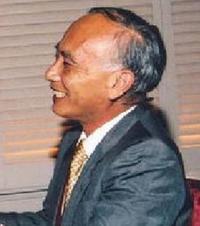
Education
Takeshi Yasumoto was born in Okinawa, Japan. He completed his B.S., M.S. and Ph.D. in Marine Biochemistry at the Faculty of Agriculture of the University of Tokyo.
Honors
2010 Doctor Honoris Causa of the University of Vigo, Spain; 2006 Nakanishi Prize, American Chemical Society; 2004 Imperial Award and the Japan Academy Prize for research on the chemistry of marine biotoxins and their dynamic behaviors in food chains; 2000 Honorary Ph.D. Kalmar University; 1999 Medal with Purple Ribbon from the Japanese Government; 1995 Host of the 7th Int. Conf. Harmful Algae in Sendai, Japan; 1995 Naito Foundation Research Prize; 1994 P. J. Scheuer Award for Natural Products Chemistry ; 1989 Special award by the 4th International Conference on Toxic Marine phytoplankton, Lund, for outstanding achievements in the field of marine toxin chemistry (since then termed the Yasumoto Award). Etymology of the toxic dinoflagellate Gambierdiscus yasumotoi.
Professional Career
Currently Research Director at the Okinawa Science and Technology Promotion Center, Okinawa, Japan; 1977-1992 Professor of Food Hygiene, and Professor of Bioorganic Chemistry at the Faculty of Agriculture, Tohoku University; 1969-1977 Associate Professor in Food Chemistry at Tohoku University; 1960-1969 Assistant Professor in Marine Biochemistry at the University of Tokyo; 1966-1968 Postdoctoral work at the Department of Chemistry of the University of Hawaii.
Key HAB contributions
Prof Yasumoto and his colleagues made pioneering contributions to structural elucidation, definition of toxic potency, identification of causative organisms and development of analytical technologies for nearly all known seafood toxins. Where a seafood poisoning syndrome occurred he was never satisfied with just describing the effects or identify potential algal sources, he always strived to provide a full understanding of the nature of the toxins and their chemical structures. He reputedly suffered himself from the consequences of eating contaminated shellfish, after which his natural curiosity drove him to investigate the causes of what later became known as Diarrhetic Shellfish Poisoning (DSP). He first isolated two fat-soluble thermostable toxins, implemented a DSP mouse bioassay now applied worldwide, identified the dinoflagellate Dinophysis fortii as the causative agent from size-selected plankton concentrates (with Lee), and ultimately (with Murata) identified okadaic acid as the main bioactive compound. Yasumoto’s works also cover Paralytic Shellfish Toxins (with Oshima; including the description of numerous new saxitoxin analogues), Yessotoxins (including discovery of Protoceratium reticulatum as causative organism), Ciguatoxins and Maitotoxins (with Murata; including discovery of Gambierdiscus toxicus as causative organism), Neurotoxic Shellfish Toxins (with Satake), Azaspiracids (with Ofuji), but also Prorocentrolides, Palytoxin, Prymnesins and new Tetrodotoxins.
His strategy of combining NMR with FAB MS/MS for elucidating planar structures and relative stereochemistry and to combine chiral reagents with synthesis of partial structures proved to be highly efficient and successful. His chemical characterization in 1989 of ciguatoxin from 4 tons of moray eel and identification of the dinoflagellate Gambierdiscus toxicus as the causative organism of ciguatera (collaboration with the Tahiti research group) put an end to years of arguments and paved the way for major advances in monitoring and management of this critical tropical seafood poisoning syndrome. Together with the structural elucidation of maitotoxin (molecular weight of 3422 makes it the largest natural product characterized) this earned him the prestigious 2004 Imperial Award and the Japan Academy Prize.
Prof Yasumoto has widely collaborated with harmful algal bloom scientists all over the world, from the Kattegat Chrysochromulina polylepis fish kills, the New Zealand NSP outbreak, European DSP, to ciguatera in French Polynesia. Anybody that met him or worked with him has been struck by his friendly generosity and depth of knowledge; he will often sit down with pen and paper and write out some chemical reaction or structure without reference to notes, but he is just as comfortable discussing aspects of biology or biochemistry. Attending his talks is like watching a real “guru” and magician at work, surprising you with a new toxin in the last minute. Yasumoto has always had an open door for anybody that seeks his advice, requests him to speak at conferences, sit on AOAC/FAO committees, sharing his knowledge and ideas, not to mention the contents of those precious vials he often carries in his jacket pockets or his tiny carry-on travel bag. Yasumoto is well loved all over the world for his always valuable and warm collaboration with research groups, monitoring centers and food safety agencies. He thus made key contributions to the Galician mussel industry, the EU Reference Laboratory on Marine Biotoxins and the Analytical Food Chemistry group at the University of Vigo (as recognized in his award of Doctor Honoris Causa at the University of Vigo). Those that have had the privilege of enjoying his friendship keep it as an esteemed treasure and appreciate his modesty, naturalness, closeness and wisdom. Yasumoto generously donated some of his prize monies to ISSHA to support what is now fittingly known as the “ISSHA Lifetime Yasumoto Achievement Award”.
Mentored
Yasukatsu Oshima, Michio Murata, Hiroshi Nagai, Mari Yotsu-Yamashita, Masayuki Satake, Toshiyuki Suzuki.
10 Key HAB publications
Yasumoto T. 2005. Chemistry, etiology, and food chain dynamics of marine toxins. Proceedings of the Japan Academy, Series B, 81, 43-51.
Ofuji K, Satake M, McMahon T, James K J, Naoki H, Oshima Y, Yasumoto T. 2001. Structures of azaspiracid analogs, azaspiracid-4 and azaspiracid-5, causative toxins of azaspiracid poisoning in Europe. Bioscience, Biotechnology, and Biochemistry 65, 740-742.
Morohashi A, Satake M, Naoki H, Kaspar H F, Oshima Y, Yasumoto T. 1999. Brevetoxin B4 isolated from greenshell mussels Perna canaliculus, the major toxin involved in neurotoxic shellfish poisoning in New Zealand. Natural toxins 7, 45-48.
Ciminiello P, Fattorusso E, Forino M, Magno S, Poletti R, Satake M, Viviani R, Yasumoto T. 1997. Yessotoxin in mussels of the northern Adriatic Sea. Toxicon 35, 177-183.
Murata M, Naoki H, Matsunaga S, Satake M, Yasumoto T. 1994. Structure and partial stereochemical assignments for maitotoxin, the most toxic and largest natural non-biopolymer. J. Am. Chem. Soc. 116, 7098-7107.
Yasumoto, T, Satake M, Fukui M, Nagai N, Murata M, Legrand A.M. 1993. A turning point in ciguatera study. In: Smayda, T.J. & Y. Shimizu (eds), Toxic Phytoplankton in the Sea, Elsevier, Amsterdam, pp. 455-461.
Murata M., Legrand AM, Ishibashi Y, Yasumoto T. 1990. Structures and configurations of ciguatoxin from the moray eel Gymnothorax javanicus and its likely precursor from the dinoflagellate Gambierdiscus toxicus. J. Am. Chem. Soc. 112, 4380—4386.
Yasumoto T, Murata M, Oshima Y, Sano M, Matsumoto GK, Clardy J. 1985. Diarrhetic Shellfish Toxins. Tetrahedron 41, 1019-1025.
Yasumoto T, Oshima Y, Sugawara W, Fukuyo Y, Oguri H, Igarashi T, Fujita H. 1980. Identification of Dinophysis fortii as the causative organism of diarrhetic shellfish poisoning. Bull. Jpn. Soc. Sci. Fish. 46, 1405-1411.
Yasumoto T, Oshima Y, Yamaguchi M. 1978. Occurrence of a new type of shellfish poisoning in the Tohoku district. Bull. Jap. Soc. Sci. Fish. 44, 1249-1255.
--
Photograph: University of Vigo. Compiled by G. Hallegraeff, M. Murata, P.McNabb and B. Reguera.

